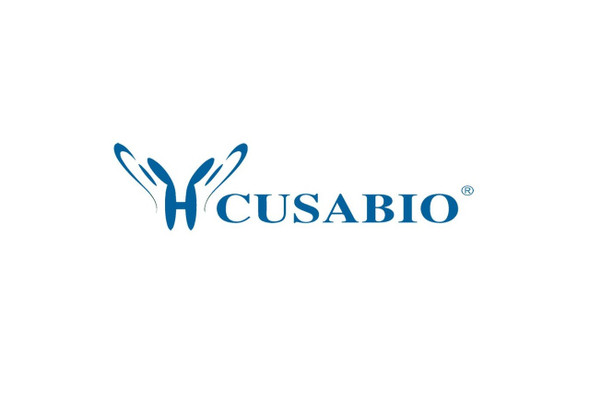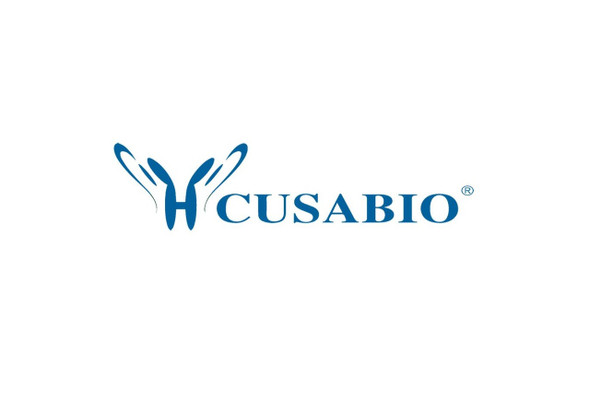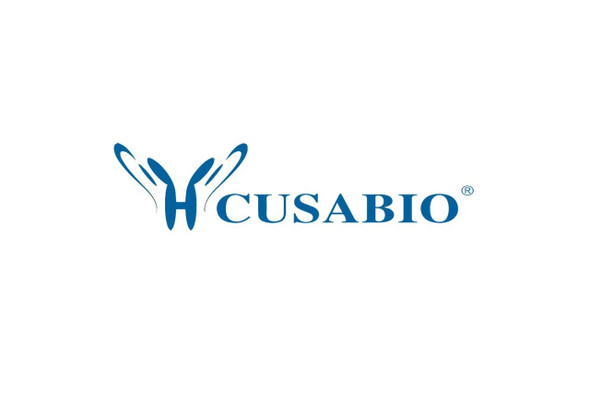Cusabio Human Recombinants
Recombinant Human Centromere protein R (ITGB3BP) | CSB-EP622653HU
- SKU:
- CSB-EP622653HU
- Availability:
- 13 - 23 Working Days
Description
Recombinant Human Centromere protein R (ITGB3BP) | CSB-EP622653HU | Cusabio
Alternative Name(s): Beta-3-endonexin Integrin beta-3-binding protein Nuclear receptor-interacting factor 3
Gene Names: ITGB3BP
Research Areas: Epigenetics and Nuclear Signaling
Organism: Homo sapiens (Human)
AA Sequence: MPVKRSLKLDGLLEENSFDPSKITRKKSVITYSPTTGTCQMSLFASPTSSEEQKHRNGLSNEKRKKLNHPSLTESKESTTKDNDEFMMLLSKVEKLSEEIMEIMQNLSSIQALEGSRELENLIGISCASHFLKREMQKTKELMTKVNKQKLFEKSTGLPHKASRHLDSYEFLKAILN
Source: E.coli
Tag Info: N-terminal GST-tagged
Expression Region: 1-177aa
Sequence Info: Full Length
MW: 47.2 kDa
Purity: Greater than 90% as determined by SDS-PAGE.
Relevance: Transcription coregulator that can have both coactivator and corepressor functions. Isoform 1, but not other isoforms, is involved in the coactivation of nuclear receptors for retinoid X (RXRs) and thyroid hormone (TRs) in a ligand-dependent fashion. In contrast, it does not coactivate nuclear receptors for retinoic acid, vitamin D, progesterone receptor, nor glucocorticoid. Acts as a coactivator for estrogen receptor alpha. Acts as a transcriptional corepressor via its interaction with the NFKB1 NF-kappa-B subunit, possibly by interfering with the transactivation domain of NFKB1. Induces apoptosis in breast cancer cells, but not in other cancer cells, via a caspase-2 mediated pathway that involves mitochondrial membrane permeabilization but does not require other caspases. May also act as an inhibitor of cyclin A-associated kinase. Also acts a component of the CENPA-CAD (nucleosome distal) complex, a complex recruited to centromeres which is involved in assembly of kinetochore proteins, mitotic progression and chromosome segregation. May be involved in incorporation of newly synthesized CENPA into centromeres via its interaction with the CENPA-NAC complex.
Reference: "Beta 3-endonexin, a novel polypeptide that interacts specifically with the cytoplasmic tail of the integrin beta 3 subunit." Shattil S.J., O'Toole T.E., Eigenthaler M.J., Thon V., Williams M.J., Babior B.M., Ginsberg M.H. J. Cell Biol. 131:807-816(1995)
Storage: The shelf life is related to many factors, storage state, buffer ingredients, storage temperature and the stability of the protein itself. Generally, the shelf life of liquid form is 6 months at -20?/-80?. The shelf life of lyophilized form is 12 months at -20?/-80?.
Notes: Repeated freezing and thawing is not recommended. Store working aliquots at 4? for up to one week.
Function: Transcription coregulator that can have both coactivator and corepressor functions. Isoform 1, but not other isoforms, is involved in the coactivation of nuclear receptors for retinoid X (RXRs) and thyroid hormone (TRs) in a ligand-dependent fashion. In contrast, it does not coactivate nuclear receptors for retinoic acid, vitamin D, progesterone receptor, nor glucocorticoid. Acts as a coactivator for estrogen receptor alpha. Acts as a transcriptional corepressor via its interaction with the NFKB1 NF-kappa-B subunit, possibly by interfering with the transactivation domain of NFKB1. Induces apoptosis in breast cancer cells, but not in other cancer cells, via a caspase-2 mediated pathway that involves mitochondrial membrane permeabilization but does not require other caspases. May also act as an inhibitor of cyclin A-associated kinase. Also acts a component of the CENPA-CAD (nucleosome distal) complex, a complex recruited to centromeres which is involved in assembly of kinetochore proteins, mitotic progression and chromosome segregation. May be involved in incorporation of newly synthesized CENPA into centromeres via its interaction with the CENPA-NAC complex.
Involvement in disease:
Subcellular Location: Isoform 1: Nucleus, Chromosome, centromere, Chromosome, centromere, kinetochore, SUBCELLULAR LOCATION: Isoform 2: Nucleus, SUBCELLULAR LOCATION: Isoform 3: Nucleus, Cytoplasm
Protein Families:
Tissue Specificity: Widely expressed. Expressed in spleen, thymus, prostate, ovary, small intestine and white blood cells. Highly expressed in testis and colon. Isoform 4 is expressed in platelets, lymphocytes and granulocytes.
Paythway:
Form: Liquid or Lyophilized powder
Buffer: If the delivery form is liquid, the default storage buffer is Tris/PBS-based buffer, 5%-50% glycerol. If the delivery form is lyophilized powder, the buffer before lyophilization is Tris/PBS-based buffer, 6% Trehalose, pH 8.0.
Reconstitution: We recommend that this vial be briefly centrifuged prior to opening to bring the contents to the bottom. Please reconstitute protein in deionized sterile water to a concentration of 0.1-1.0 mg/mL.We recommend to add 5-50% of glycerol (final concentration) and aliquot for long-term storage at -20?/-80?. Our default final concentration of glycerol is 50%. Customers could use it as reference.
Uniprot ID: Q13352
HGNC Database Link: HGNC
UniGene Database Link: UniGene
KEGG Database Link: KEGG
STRING Database Link: STRING
OMIM Database Link: OMIM









